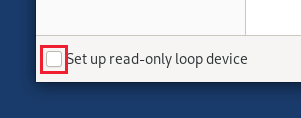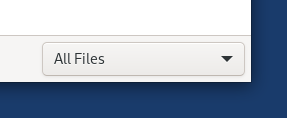Introduction to VeraCrypt
VeraCrypt is a disk encryption tool that works on Windows, macOS, and Linux.
Comparison between LUKS and VeraCrypt
You can also create and open LUKS encrypted volumes in Tails. LUKS is the standard for disk encryption in Linux. See our documentation about LUKS.
We recommend that you use:
VeraCrypt to share encrypted files across different operating systems.
LUKS to encrypt files for Tails and Linux.
| LUKS | VeraCrypt | |
|---|---|---|
| Compatibility | Linux | Windows + macOS + Linux |
| Create new volumes | Yes | Outside of Tails |
| Open and modify existing volumes | Yes | Yes |
| Encrypted partitions (or entire disks)¹ | Yes | Yes |
| Encrypted file containers¹ | Complicated | Easy |
| Plausible deniability² | No | Yes |
| Ease of use | Easier | More complicated |
| Speed | Faster | Slower |
Plausible deniability: in some cases (for example, with VeraCrypt hidden volumes), it is impossible for an adversary to technically prove the existence of an encrypted volume.
Still, deniable encryption might not protect you if you are forced to reveal the existence of the encrypted volume. See VeraCrypt: Plausible Deniability.
To create new VeraCrypt volumes, do so outside of Tails. See VeraCrypt: Beginner's Tutorial.
Difference between file containers and partitions
With VeraCrypt you can store your files encrypted in two different kinds of volumes:
File containers
A file container is a single big file inside which you can store several files encrypted, a bit like a ZIP file.
Partitions or drives
Usually, drives (USB sticks and hard disks) have a single partition of their entire size. This way, you can encrypt a whole USB stick, for example. But, drives can also be split into several partitions.
Unlocking parameters
To unlock a VeraCrypt volume, you might need the following parameters, depending on the options that were selected when the volume was created:
Passphrase
Keyfiles: instead of or in addition to the passphrase, a VeraCrypt volume can be unlocked using a particular file or set of files.
PIM: a number that is needed if it was specified when creating the VeraCrypt volume.
Hidden volume: if you want to unlock the hidden volume inside the VeraCrypt volume.
System volume: if you want to unlock an encrypted Windows system partition.
See the VeraCrypt documentation on encrypting a Windows system partition.
Using a file container
![]()
Unlocking a file container without keyfiles
Choose Apps ▸ Utilities ▸ Unlock VeraCrypt Volumes.
Click Add and choose the file container that you want to unlock.
Enter the parameters to unlock the volume. For more information, see the Unlocking parameters section above.
Click Unlock.
Unlock VeraCrypt Volumes unlocks your volume.
If unlocking the volume fails (for example, if you mistyped the password), click on Unlock to try unlocking again.
Click Open to open the volume in the Files browser.
Unlocking a file container with keyfiles
Choose Apps ▸ Utilities ▸ Disks to open the Disks utility.
Choose
 ▸
Attach Disk Image from the top navigation bar.
▸
Attach Disk Image from the top navigation bar.In the Select Disk Image to Attach dialog:
Unselect the Set up read-only loop device check box in the bottom-left corner if you want to modify the content of the file container.
Choose All Files in the file filter in the bottom-right corner.
Navigate to the folder containing the file container that you want to open.
Select the file container and click Attach.
A first dialog appears to unlock the container.
Select Cancel.
It is impossible to use keyfiles with this first dialog.
A second dialog called Set options to unlock appears to unlock the container.
Enter the parameters to unlock the volume. For more information, see the Unlocking parameters section above.
Click Unlock.
Open your VeraCrypt volume from the sidebar of the Files menu.
Using a partition or drive
![]()
Unlocking a partition on an external storage device
Plug in the USB stick or hard disk that you want to unlock.
An authentication dialog appears.
Enter the parameters to unlock the volume. For more information, see the Unlocking parameters section above.
Click Unlock.
Open your VeraCrypt volume from the sidebar of the Files menu.
Unlocking a partition on an internal hard disk
When starting Tails, set up an administration password.
Choose Apps ▸ Utilities ▸ Disks to open the Disks utility.
In the left pane, select the drive that corresponds to your hard disk.
In the right pane, select the partition that corresponds to your VeraCrypt volume.
It should have an Encrypted? label.
Click the
 button in the right pane.
button in the right pane.An authentication dialog appears.
Enter the parameters to unlock the volume. For more information, see the Unlocking parameters section above.
Click Unlock.
Select the file system that appears below the unlocked volume.
Click the
 button to mount the volume.
button to mount the volume.Click on the /media/amnesia/ link in the right pane to open the volume in the Files browser.
Ejecting a VeraCrypt volume
Choose Apps ▸ Accessories ▸ Files to open the Files browser.
In the sidebar of the Files browser, click on the
 button
on the label of your VeraCrypt volume.
button
on the label of your VeraCrypt volume.




